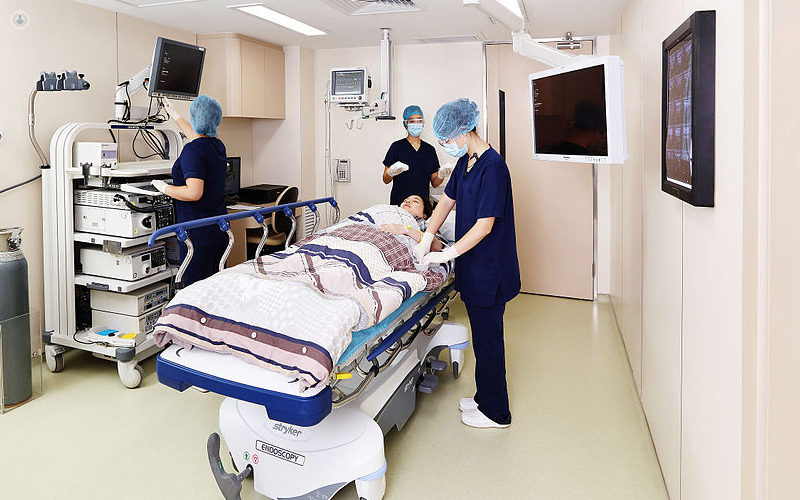


What is endoscopic mucosal resection (EMR)?
Endoscopic mucosal resection (EMR) is a technique used to remove precancerous growths, early-stage cancer, and other abnormal lesions from the lining of the digestive system.
Patients will be given a sedative to prevent pain, the strength of which depends on the patient and procedure. For EMR of the upper digestive tract, a local anaesthetic will be delivered via a spray to numb the throat and oesophagus.
Why would you have endoscopic mucosal resection?
EMR is a less-invasive option than open surgery, and can be the safest option to remove early-stage cancer or other abnormalities in the digestive tract lining. It can also be used to take tissue samples to help the doctor diagnose the problem, and if the patient has cancer, EMR can help the doctor to know if the cancer has spread to deeper tissues.
Some conditions endoscopic mucosal resection can be used to treat include:
What does EMR involve?
Endoscopic mucosal resection may be performed from the upper or lower end of the digestive tract, depending on the location of the cancer or growth. A long, narrow tube fitted with a light and video camera (an endoscope) is inserted into either the mouth (to reach the oesophagus, stomach, or upper part of the small intestine) or the anus (to examine the colon).
To remove tissue, the doctor inserts instruments through the endoscope.
How to prepare for endoscopic mucosal resection
You will have to provide your medical history and details of any medication you use to the doctor before having EMR. You will be instructed not to eat or drink anything from several hours before the procedure, and you may not be able to take certain medication during this time either, as it may interfere with the sedatives you will be given.
Post-operative care
The patient remains in the hospital until the effects of sedation have worn off. The doctor will provide instructions on when they can start eating and drinking again. While most patients go home on the same day, it is advised that someone takes them home, as it is not advisable to drive.
A follow-up appointment will be made to discuss the results of the EMR, and several months after, another endoscopy will be performed to ensure the whole lesion is gone.
